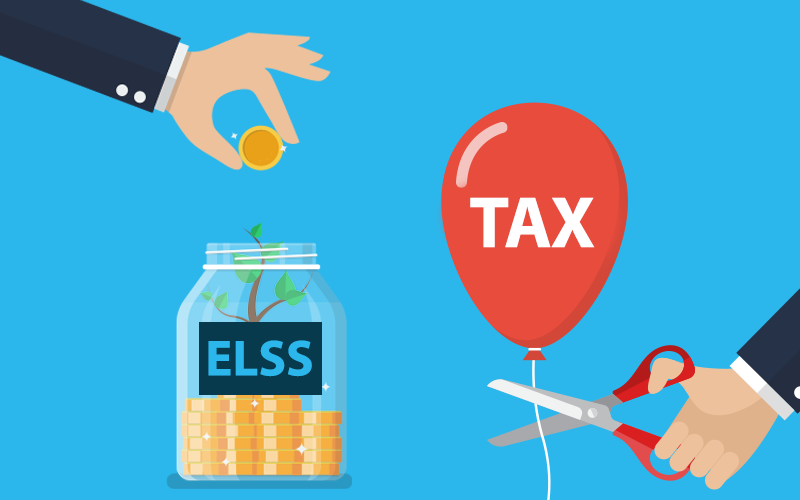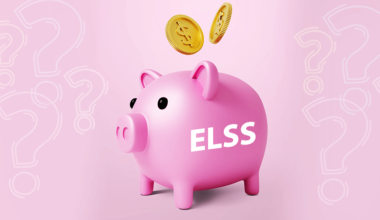Equity Linked Saving Scheme (ELSS) is a tax-saver mutual fund scheme that comes where the investment mode is that of a Systematic Investment Plan (SIP). It comes under Section 80C of the Income Tax Act and offers tax exemption of up to Rs. 1,50,000 from the annual taxable income.
What is ELSS?
Equity Linked Savings Scheme (ELSS) is an equity-oriented mutual fund with which investors can avail of tax benefits. As the name suggests, this mutual fund scheme allocates a major section of the corpus to equities and equity-related instruments. ELSS is also synonymous with SIP where the investors make regular periodic payments to buy units of the fund scheme instead of a lump sum investment. These funds also have a mandatory lock-in period of 3 years.
Features of ELSS
Investors must know the important aspects of any scheme before they invest their money into it. It is also important to consider the following salient features of ELSS before investing –
- ELSS is not an alternate investment scheme to mutual funds but is a type of mutual fund scheme. It is also not a substitute for SIP, instead, it is a tax-saver SIP
- It is an equity mutual fund that invests about 80% of the fund corpus in equities and related money market instruments
- It is the only mutual fund/SIP that comes with taxation benefits
- ELSS funds come with a lock-in period of a minimum of 3 years. This is a tax-saver investment scheme with the lowest lock-in tenure in comparison to Fixed Deposits (FDs) and other tax-saving schemes. However, ELSS is also riskier than other tax saving instruments
- The gains from ELSS are counted as Long Term Capital Gains (LTCG) and are taxed accordingly
- The taxation benefits include an exemption of up to Rs. 1.5 Lakh under Section 80C of the Income Tax Act in a financial year. Moreover, the long-term capital gains that are taxed as per the norms of taxation of equity funds, are also exempt up to Rs. 1 Lakh and taxed at 10% above that
Types of ELSS
Like most mutual funds, ELSS can be broadly classified into two types based on the returns payout and investment system-
1. Growth Plan
In this plan, the money invested through SIPs and the returns generated are all given to investors in a lump sum after the lock-in period is over. The full value is realized after investors redeem the units.
2. Dividend Plan
In this plan, there is tax-free dividend income even if there is a lock-in period where you cannot opt for the redemption of the units to end the SIP. You can, however, choose to receive the regular payout through dividend payouts or opt to get the dividends reinvested. Therefore, the Dividend Plan is further divided into subcategories of Dividend Payout and Dividend Reinvestment.
Advantages of ELSS
ELSS comes with multiple benefits which include the benefits of SIP such as the power of compounding, rupee cost averaging, and flexibility of payments. The other advantages of ELSS are:
- It is a tax-saver fund and the only one among mutual funds or SIPs offering such benefits
- It adds to the diversification of the portfolio as it invests in stocks of all sectors, industries, and capitalizations
- ELSS aims at giving high returns to the investors after the expiry of the 3 year lock-in period as it is equity-oriented. Historically, it has generated returns at an average of 12% which is higher than most of the other tax-saving instruments
- ELSS is a kind of SIP; hence investors can start with a minimum amount for investing in this scheme and avail the opportunity to save taxes and create wealth with small, regular investments
Who should Invest in ELSS?
Investors looking for an investment-cum-tax saving tool should invest in ELSS. Apart from this, they must consider other factors as below:
- Unlike other SIPs, you can neither stop ELSS before the lock-in duration of 3 years nor redeem the units. So, invest only if you are ready for this lock-in period (you may continue for more than 3 years). It helps to build a discipline of regular investments that you cannot touch during the lock-in period
- Most investors invest in ELSS for tax saving purposes but it is necessarily an equity mutual fund investment through a mode of SIP. It is subject to market risks and therefore, if you want safe options then you may opt for PPF, tax-saver FDs, etc.
- SIP gives optimum returns in the long-term horizon and thereby, experts suggest continuing ELSS for more than 3 years stretching it to 5-7 years to gain handsome returns. As they are inherently volatile, longer duration offers stability
- Investors who seek to diversify and balance their investment portfolio by investing in various asset classes and schemes should invest in ELSS coupled with PPF. A mix of equities and government-backed debt securities through ELSS and PPF investments respectively gives returns plus stability
- ELSS benefits from the market highs as well as lessens the impact of volatility during the market lows by spreading the investments. As the payment mode is that of a SIP, it acts as a shield against the market fluctuations
Wrapping it up:
ELSS (Equity Linked Savings Scheme) is the only mutual fund that offers tax benefits. As the mode of investment is not a lump sum but regular installments, we can also say it is the only tax-saver SIP that comes under Section 80C of the Income Tax Act. It is equity-oriented and thus, has the potential to provide elevated returns to the investors but also comes with a lock-in period of 3 years. Financial advisers suggest staying invested for longer to get higher returns with adjusted risks. So, investors seeking capital appreciation with tax benefits can invest in ELSS. It can offer more returns than FD, PPF, and others but investors should also have a higher risk appetite for ELSS.





